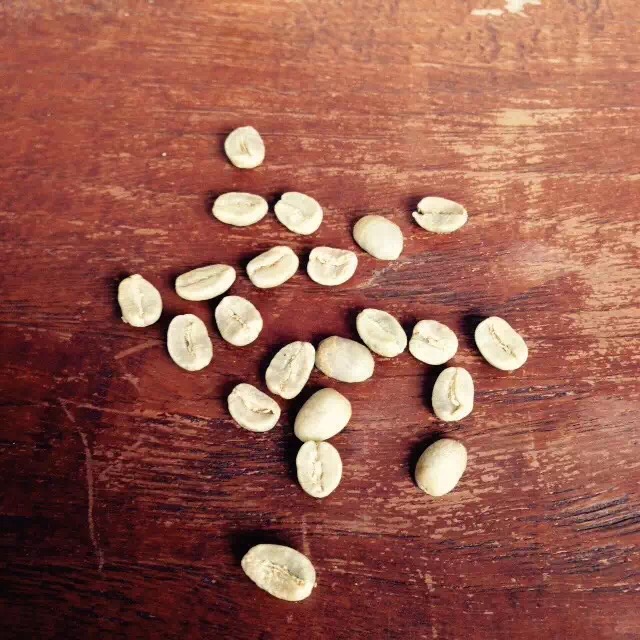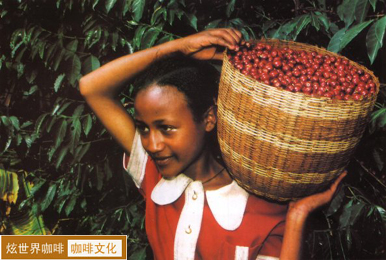Coffee raw bean label: explanation of "GP", "EP" and "SWP"
The words EP or SWP sometimes appear on raw bean labels, which are two common ways to remove caffeine.
Caffeine and decaffeinated coffee
Caffeine, caffeine, is a natural ingredient in coffee. In addition to coffee, many foods we come into contact with in our daily life also contain this ingredient, such as tea, chocolate, cola, cold medicine and so on. (reference article: caffeine)
In order to cater to a variety of tastes, coffee beans are sometimes decontaminated to get the familiar decaf, decaffeinated coffee.
Usually, depending on the type of coffee, raw coffee beans contain about 1-3% caffeine, and the presence of caffeine is basically unaffected during roasting. Robusta has twice as much caffeine as Arabica.
Decaffeinated coffee actually eliminates about 97% of the caffeine, not a complete cause.
There are two main ways to eliminate causes that are widely used in business:
EP,European Process, European treatment method; SWP,Swiss Water Process, Swiss Water treatment method.
EP: chemical beans?
In EP treatment, raw coffee beans are soaked in water, absorbed caffeine with dichloromethane (methylene chloride, an organic solvent) solution, then rinsed clean, dried, and entered the baking process. Except for the caffeine process, it only absorbs caffeine and has no effect on other ingredients in coffee beans. It is generally believed that there is no preparation residue in the coffee beans treated by EP after roasting. However, people will probably still mind emotionally the involvement of chemical composition.
SWP: steam beans?
The biggest advantage of SWP, the Swiss water treatment method, is that only hot water and steam are used except for the absence of any chemical agents in the process. The raw coffee beans are soaked in water, and all the soluble ingredients in the raw beans, including caffeine, are absorbed by the water, and the coffee beans that have been "sucked" are set aside, while the water that dissolves and turns into an "essence" goes through an activated carbon filter, which absorbs caffeine from the water. The decaffeinated water meets the raw coffee beans again, and the raw beans are bathed in water to reabsorb the lost essence. Then, the raw beans are dried and baked.
The biggest advantage of SWP is that there are no chemical solvents involved in the whole process, but the disadvantage is that while the water absorbs caffeine, it also dissolves other ingredients of coffee beans, including some natural coffee oils, some of which cannot be reabsorbed by raw beans. The raw beans treated with SWP will lose part of their flavor.
The Gospel of decaf lovers
The good news is that in 2004, scientists discovered a natural decaf tree in Ethiopia, belonging to Arabica, which lacks the enzymes needed to synthesize caffeine. Coffee drinkers may soon be able to enjoy delicious natural decaf.
GP, refers to a way of packaging raw beans, GrainPro, special packaging for grains.
When raw coffee beans are exported from the place of production, they are packed in gunny bags, which is already familiar to most coffee lovers.
However, with the trend of boutique coffee, some changes have taken place in the way of packaging.
As we all know, the world's coffee production is mainly distributed in the so-called "coffee belt" coffee zone or coffee belt, that is, between 20 or 25 degrees north and south latitudes, mainly concentrated in Africa and Central and South America.
Raw coffee beans take a long journey from the place of production to the place of consumption, usually by sea considering the cost of transportation.
During intercontinental transportation, it may take more than a month for raw beans to be transported.
The main defects in sack packaging are well known and may taint raw beans with the smell of sacks. In addition, gunny bags can not be waterproof, in the long process of shipping, there will inevitably be omissions. Boutique coffee users may find that the original cup tested raw beans, after transportation, finally arrived, the effect of the second cup test is not satisfactory. The main reason is that the packaging of gunny bags is difficult to meet the sensitivity requirements of high-quality raw beans.
The higher the quality of raw beans, the harsher the storage conditions.
What is talked about is the humidity and temperature in the storage environment.
GrainPro packing, specially used for transporting or keeping dried grains. For raw coffee beans, the appearance shows that the raw beans are first packed in a multi-layer plastic bag and then, in the traditional way, into a gunny bag.
GrainPro bags can ensure the water content of raw beans, waterproof, anti-UV, can inhibit the growth of fungi or insects, compared with the traditional packaging, can better ensure the quality of raw beans during storage.

Source:
Qingdao Xiumen Coffee blog
Important Notice :
前街咖啡 FrontStreet Coffee has moved to new addredd:
FrontStreet Coffee Address: 315,Donghua East Road,GuangZhou
Tel:020 38364473
- Prev

Take you into the mysterious world of coffee to find the hometown of coffee, Ethiopia.
What gives half a head a taste of civilization is the bright strawberry juice. But in people's minds, coffee is the symbol of civilization, originating from Ethiopia, witnessing the history of human civilization, the drink of gods and demons, the first taste of civilization, coffee, she has come all the way brilliantly, today, we will work with you to find the hometown of coffee-Ethiopia. About how coffee is grown and consumed throughout the country.
- Next

Boutique Coffee beans: an introduction to "Shade planting" Coffee Shade Grown
If you pay close attention to it, some raw bean sacks will be marked with the word Shade Grown, and most of them will be shaded and planted in Chinese. The so-called shade planting refers to the most praised Arabica species among the coffee varieties. The output of this variety accounts for 60% to 70% of the statistics of global coffee production, and is considered to be a coffee with excellent flavor that can be tasted carefully. Relative to Robes.
Related
- Guji coffee producing area of Guji, Ethiopia: Humbela, Shakiso, Wulaga
- What is the most expensive variety of Qiloso in BOP multi-variety group?
- How to store the coffee beans bought home?
- Why are Yemeni coffee beans so rare now?
- Ethiopian Sidamo all Red Fruit Sun Sun Santa Vini Coffee beans
- SOE is mostly sour? What does it mean? Is it a single bean? what's the difference between it and Italian blending?
- Is Italian coffee beans suitable for making hand-brewed coffee?
- How to choose coffee beans when making cold coffee? What kind of coffee beans are suitable for making cold coffee?
- Just entered the pit to make coffee, what kind of coffee beans should be chosen?
- Can only Japan buy real Blue Mountain Coffee? What are authentic Jamaican Blue Mountain coffee beans?

